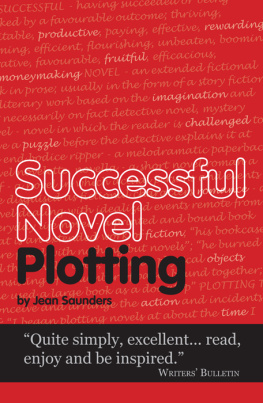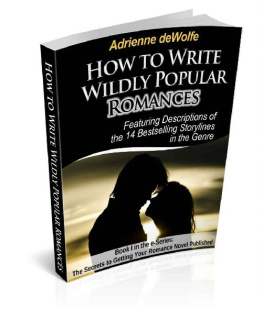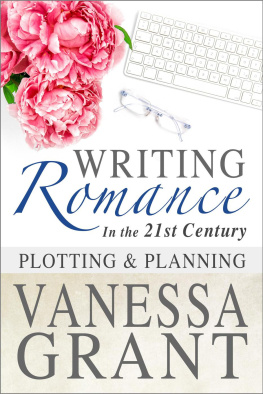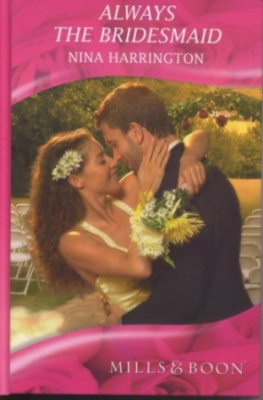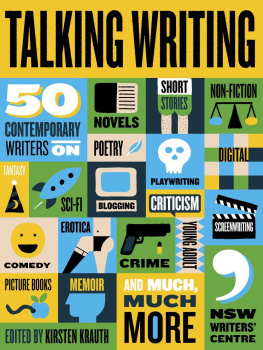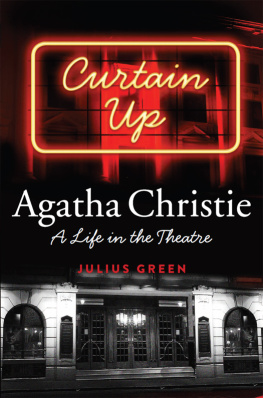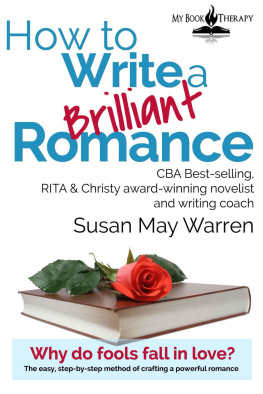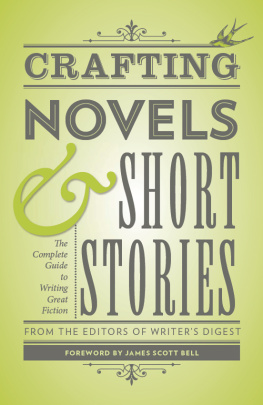SUCCESSFUL
NOVEL PLOTTING
JEAN SAUNDERS
This edition first
published by Accent Press Ltd 2009
ISBN 9781907726101
First Published by Allison & Busby 1999
Copyright Jean Saunders 1999
The right of Jean Saunders to be identified as the author of this work has been asserted by her in accordance with the Copyright, Designs and Patents Act 1988.
All rights reserved. No part of this book may be reproduced, stored in a retrieval system, or transmitted in any form or by any means, electronic, electrostatic, magnetic tape, mechanical, photocopying, recording or otherwise, without the written permission of the publishers: Accent Press Ltd, The Old School, Upper High St, Bedlinog, Mid-Glamorgan CF46 6RY.
Cover Design by Red Dot Design
When some erudite journalist or semi-interested relative asks you what your novel is about, and your mind goes totally blank ... thats when your basic plot comes to your rescue.
If you ever had one, that is. Some people dont. Maybe they are thelucky ones. They begin with a single sentence of wonderful prose or intriguing dialogue, and the story seems to spring from that point, and flows along effortlessly. And they are few and far between in terms of successful authors.
Most of us need to plan our books, so that not only do we know where were going, but also so that we can get our characters and events from point A to point Z, without too many useless meanderings along the way.
Im not going to give you a posh dictionary definition of a plot. You can look that up for yourself. And if you are interested in writing novels at all, you will know what Im talking about. But to make it absolutely clear, and in its simplest terms, plot equals story, okay?
In any case, aside from its usefulness in planning a novels progress, the word plot can have several meanings. It can be a sinister and threatening word, with undertones of blowing up the Houses of Parliament. It can be a means of detailing a course of action or of mapping out compass points. It can be a devious and ruthless way of ousting members of a society. But thats not what were concerned with, and a writers requirements for a plot are somewhat different.
The new writer can be confused and mystified by the words theme, synopsis and blurb. In fact, they can all be called variations on a ... well, a theme. All these things, and many more, will be included within the plot outline, and need clarifying to those who have not come across them before in a publishing context.
Theme sounds very grand, but to me the theme of a novel is merely the basic concept that the story hinges on, the starting-point.
The theme may be one of revenge, or girl-gets-boy romance, or kitchen-sink drama, or a crime of passion, or ... well, you get the picture. It can be summed up in a single word or phrase. Were not talking about filling in yet.
But to whet your appetite, many themes can be allied to such well-known proverbs as blood is thicker than water (a sibling power-struggle novel, perhaps), or better the devil you know (could this be marrying the wrong man?). In using a proverb or well-known clich asyour theme, the possible choices would be many. There will be more detail about theme in Chapter 2.
The synopsisis a much sharper, shorter prcis of the entire plot. It is your selling tool that you offer to a publisher, with or without the first three chapters of your book, or sent with the entire novel. Its purpose is to inform publishers not only that you are about to write a sparkling novel that they cannot afford to bypass, but also that you have the wherewithal to create a solid plot. The finer points of the synopsis will also be dealt with in a later chapter.
The back cover blurb is usually the publishers province, and not yours. It is used to show the reader briefly what the story is about and to entice the reader inside. On hardback books, especially, there is usually an inside front cover blurb as well, which may be different from the back cover, and which you may or may not be asked to write yourself. This depends on the publishers quirks and need not concern you until or unless asked for it.
Both these blurbs differ from the synopsis, because they tease the reader with the contents of your novel, whereas the synopsis per se leaves the publisher in no doubt how you have shaped and planned your plot.
If you are invited to write your own inside front cover blurb, dont be modest about the strength of your story and the passion of your characters. As this will eventually be printed for the readers benefit, let everyone reading it see that you really care about your characters and story, even if in as little as 200 words, which is often all that is required. This may horrify you, and it is really paring down the plot and the synopsis to its bare bones, but it is also a useful exercise in cutting, while not giving too much away.
You are not explaining to the publisher, in this instance, what your book is about. By the time you have been asked to write your inside front cover blurb, you should have a contract in your hands, soyou can afford to be confident about its future. The lure of the inside front cover blurb is to tempt the reader into wanting to read thisbook above all others. When you consider the mass of books on any bookshops shelves, its no time to be modest about your books content.
Regardless of all the other meanings of the word plot, we writers have a far more innocent reason for using it. The plot of a novel details your characters journey through the pages. It is not just what happens in a given time-slot. Its also what your characters do, and how they behave and interact, that all goes towards making your invented story believable.
So, a few introductory words about your characters before dealing with them in depth. The most successful writers are those who can create believable characters who live and breathe off the page. Fictional characters have a great advantage over real-life people,because, we, their creators, can make them do anything we want them to.
We can make them change their minds at will, give them whatever good or bad traits we choose, dictate when they will be born and marry and die. We can give them whatever horrendous diseases we wish (even invent a few unknown ones with no known cure), we can cherish our heroes and heroines, and kill off the villains when they have outdone their usefulness. We are akin to the age-old tradition of Eskimos, in that we put out our old and infirm to die ...
These are reckless statements, perhaps. But the system works, providing we have planned well enough to make such events logical, and not so far-fetched as to bring your manuscript winging back to you by the next post. I will repeat a phrase I always quote when Im talking to writers groups: write visually; think logically. It has always stood me in good stead.
The apparent loss of spontaneity in plotting a novel in detail really worries some people who believe that simply by writing things down in a sequential manner you will lose the spark of that so-called muse. The simple answer is that you wont lose it at all. Why should you, when you can always change your first thoughts, or your tenth? A flash of inspiration to put new life into a flagging scene isnt taboo just because you have outlined things methodically.
I hardly think anyone would disagree that the late Nicholas Monsarrat was a successful author whose books flowed effortlessly.Yet he was reputed to have said that when he began writing on page 1, he knew precisely what would be happening on page 286. Thats methodical for you and its taking plotting to extremes by most peoples standards.
It also sounds like a lot of hard work ... so lets be more realistic. Looking at it objectively, you may well discover that plotting and planning can be lovely words to a writer who hasnt yet begun the hard work of actually
Next page
